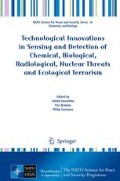Abstract
An electrochemical oxidation method for the degradation of synthetic reactive azodyes found in textile wastewaters is discussed. Four commercial synthetic dyes (black, blue, red and yellow) commonly used in dying operations were studied in single, binary and ternary mixtures. Low (100 mg/L) and high (500, 1,000 and 2,000 mg/L) initial dye concentrations were studied. The effect of various sodium chloride concentrations (as supporting electrolyte) on the effectiveness of electrochemical oxidation was examined. The effect of current intensity (1.5, 2.5 and 3.0 A) and pH (vales 3, 5, 7 and 10) was studied as well. The kinetics of the electrochemical oxidation for each dye were studied and compared. The conditions for effective dye degradation even from 2,000 mg/L initial concentration were established. The method was proved very effective even with binary and ternary mixtures of basic synthetic dyes. The Chemical Oxygen Demand (COD) and the Total Organic Carbon (TOC) were reduced by 60% and 25% respectively, meaning that the treated solutions were friendlier to the environment.
Access this chapter
Tax calculation will be finalised at checkout
Purchases are for personal use only
References
Sakalis A, Mpoulmpasakos K, Nickel U, Fytianos K, Voulgaropoulos A (2005) Evaluation of a novel electrochemical pilot plant process for azodyes removal from textile wastewater. Chem Eng J 3:63–70
Sakalis A, Nickel U, Fytianos K, Voulgaropoulos A (2006) A comparative study of platinised titanium and niobe/synthetic diamond as anodes in the electrochemical treatment of textile wastewater. Chem Eng J 119:127–133
Gallios G, Voinovschi I, Voulgaropoulos A (2010) Effect of electrolytes on the electrochemical oxidation of synthetic dyes. In: Vaclavikova M et al (eds) Water treatment technologies for the removal of high-toxicity pollutants. Springer, Dordrecht, pp 169–176
Santos AB, Cervantes FJ, Lier JB (2007) Review paper on current technologies for decolourisation of textile wastewaters: perspectives for anaerobic biotechnology. Bioresour Technol 98:2369–2385
Hao OJ, Kim H, Chiang PH, Nickel U (2000) Decolorization of wastewater. Crit Rev Environ Sci Technol 30:449–505
Wijetunga S, Wenquan R, Li X, Chen J (2006) Decolourization of textile wastewater containing acid dyes in UASB reactors system under mixed anaerobic granular sludge. Electron J Environ Agric Food Chem 3(1):1224–1234
Mohan N, Balasubramanian N, Basha CA (2007) Electrochemical oxidation of textile wastewater and its reuse. J Hazard Mater 147:644–651
Fern.andes A, Morao O, Magrinho M, Lopes A, Goncalves I (2004) Electrochemical degradation of C. I. Acid Orange 7. Dye Pigment 61:287–296
Dafnopatidou EK, Gallios GP, Tsatsaroni EG, Lazaridis NK (2007) Reactive dyestuffs removal from aqueous solutions by flotation, possibility of water reuse and dyestuff degradation. Ind Eng Chem Res 46:2125–2132
Acknowledgements
The dye and relevant information on their use were supplied by KYKE Hellas.
Author information
Authors and Affiliations
Corresponding author
Editor information
Editors and Affiliations
Rights and permissions
Copyright information
© 2012 Springer Science+Business Media B.V.
About this paper
Cite this paper
Gallios, G., Violintzis, X., Voinovskii, I., Voulgaropoulos, A. (2012). Electrochemical Oxidation of Synthetic Dyes in Simulated Wastewaters. In: Vaseashta, A., Braman, E., Susmann, P. (eds) Technological Innovations in Sensing and Detection of Chemical, Biological, Radiological, Nuclear Threats and Ecological Terrorism. NATO Science for Peace and Security Series A: Chemistry and Biology. Springer, Dordrecht. https://doi.org/10.1007/978-94-007-2488-4_31
Download citation
DOI: https://doi.org/10.1007/978-94-007-2488-4_31
Published:
Publisher Name: Springer, Dordrecht
Print ISBN: 978-94-007-2487-7
Online ISBN: 978-94-007-2488-4
eBook Packages: Biomedical and Life SciencesBiomedical and Life Sciences (R0)

